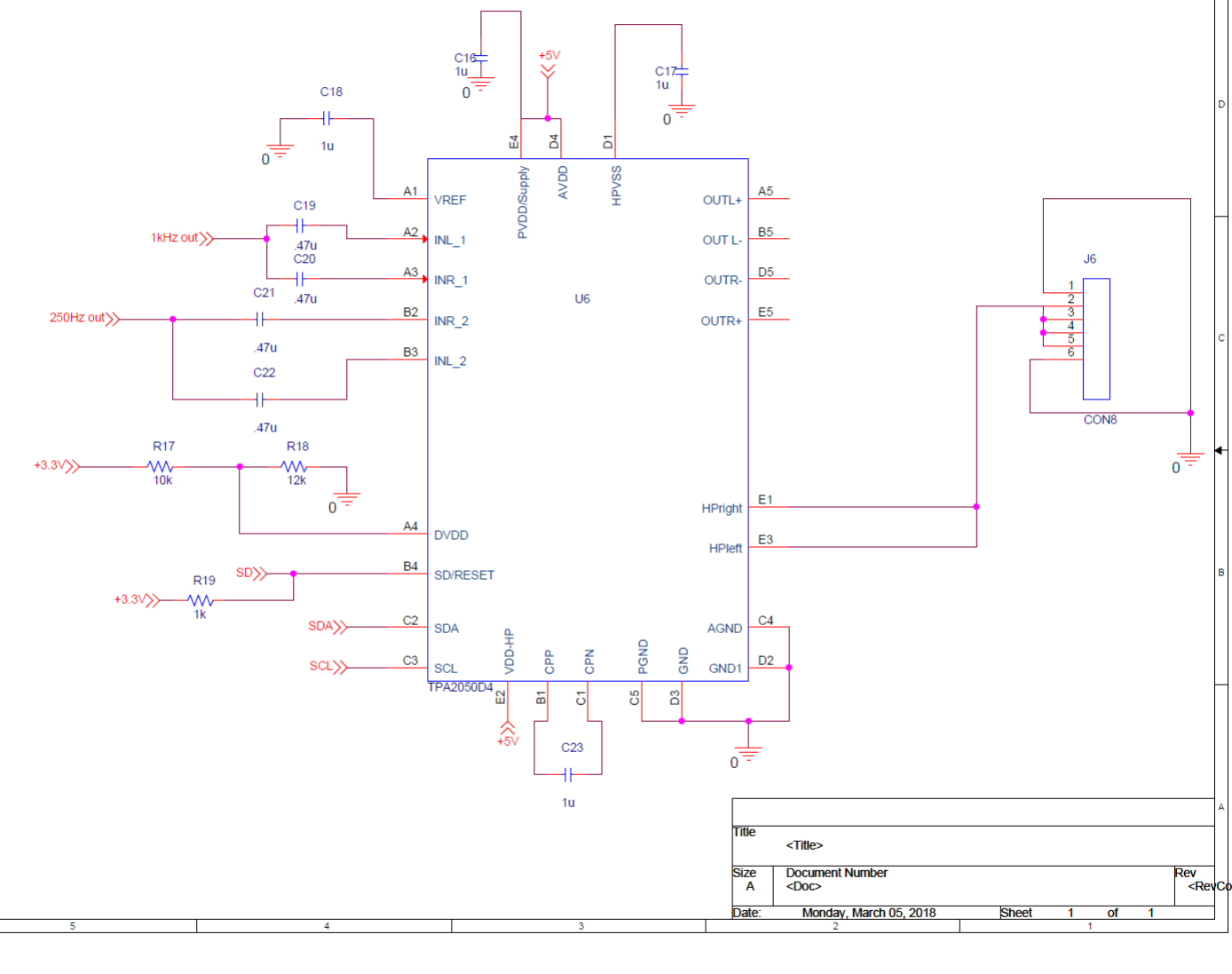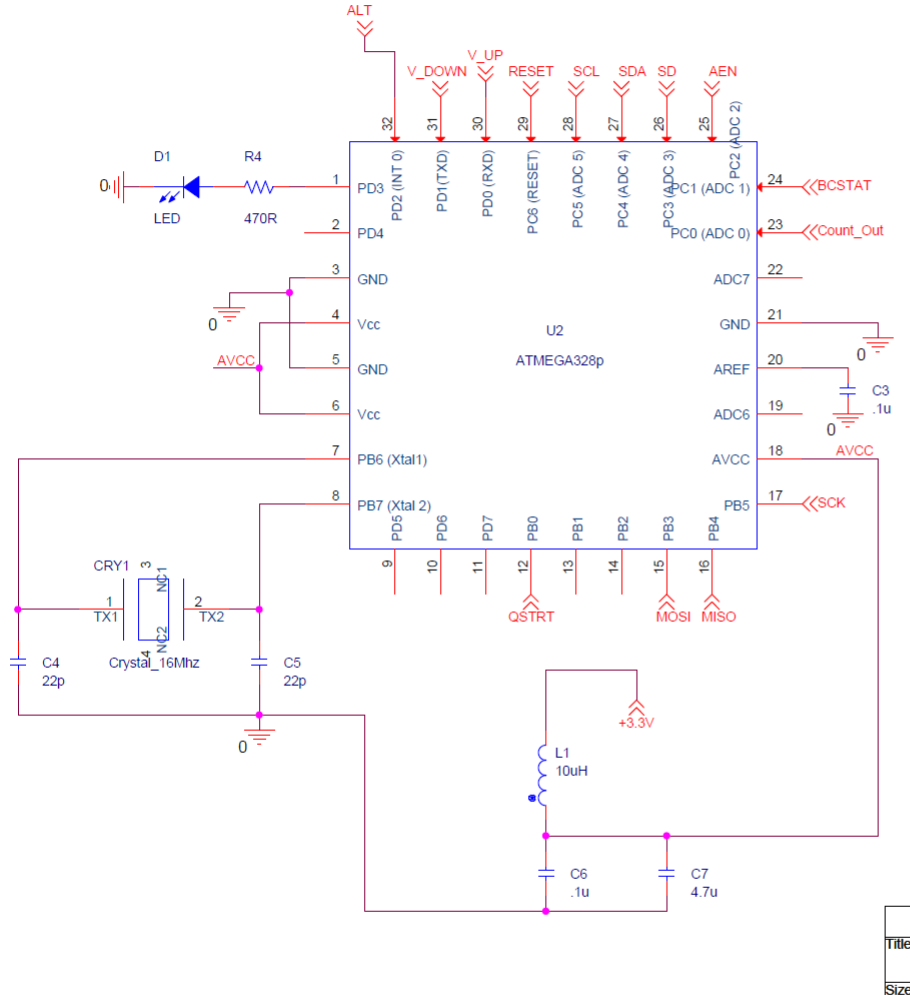Hi, I am trying to design low cost audio amplifiers for headphones with volume control (I2C) using ATMEGA328. So I want to deactivate class D amplifiers, activate only DirectPath for headphones. For now I am just trying to give a fixed volume. I checked the voltage levels at input, its around 0.25/0.11V and varying. However, I am not getting any output signal from TPA2050D4. Also, I am not sure if I am coding the device TPA2050D4 right. Not sure if its the coding issue, or my schematics, or if TPA2050D4 is compatible with ATMEGA328. Can anyone please help me on where I could be wrong.
#include <Wire.h>
#include <avr/sleep.h>
int num=0;
void setup()
{
Wire.begin();
pinMode(A3, OUTPUT);
digitalWrite(A3, HIGH);
pinMode(3,OUTPUT); //debug to led 3
//power amp setup
Wire.beginTransmission(0xE0); //write enable register
if(Wire.available()) {
num = 1;
}
Wire.write(0x02); // register address 0X02
if(Wire.available()) {
num = 1;
}
Wire.write(0x0C); // SWS '0', HPL and HPR enabled, class D disable
if(Wire.available()) {
num = 1;
}
Wire.endTransmission();
delay(100);
Wire.beginTransmission(0xE0); //write enable register
if(Wire.available()) {
num = 1;
}
Wire.write(0x03); // register address was 0X03
if(Wire.available()) {
num = 1;
}
Wire.write(0x81); // LIM_LOCK enable, mode 001, I want this at the heaphones
if(Wire.available()) {
num = 1;
}
Wire.endTransmission();
delay(100);
Wire.beginTransmission(0xE0);
if(Wire.available()) {
num = 1;
}
Wire.write(0x05); // register address was 0X05
if(Wire.available()) {
num = 1;
}
Wire.write(0x13); // volume
num = 1;
}
Wire.endTransmission();
delay(100);
Wire.beginTransmission(0xE0);
if(Wire.available()) {
num = 1;
}
Wire.write(0x06); // register address was 0X06
if(Wire.available()) {
num = 1;
}
Wire.write(0x13); // volume data
if(Wire.available()) {
num = 1;
}
Wire.endTransmission();
delay(100);
Wire.beginTransmission(0xE0);
if(Wire.available()) {
num = 1;
}
Wire.write(0x07); // register address was 0X07
if(Wire.available()) {
num = 1;
}
Wire.write(0x12); // HP voltage and gain
if(Wire.available()) {
num = 1;
}
Wire.endTransmission();
delay(100);
}
void loop()
{
if(num ==1){
digitalWrite(3,HIGH);
}
}



